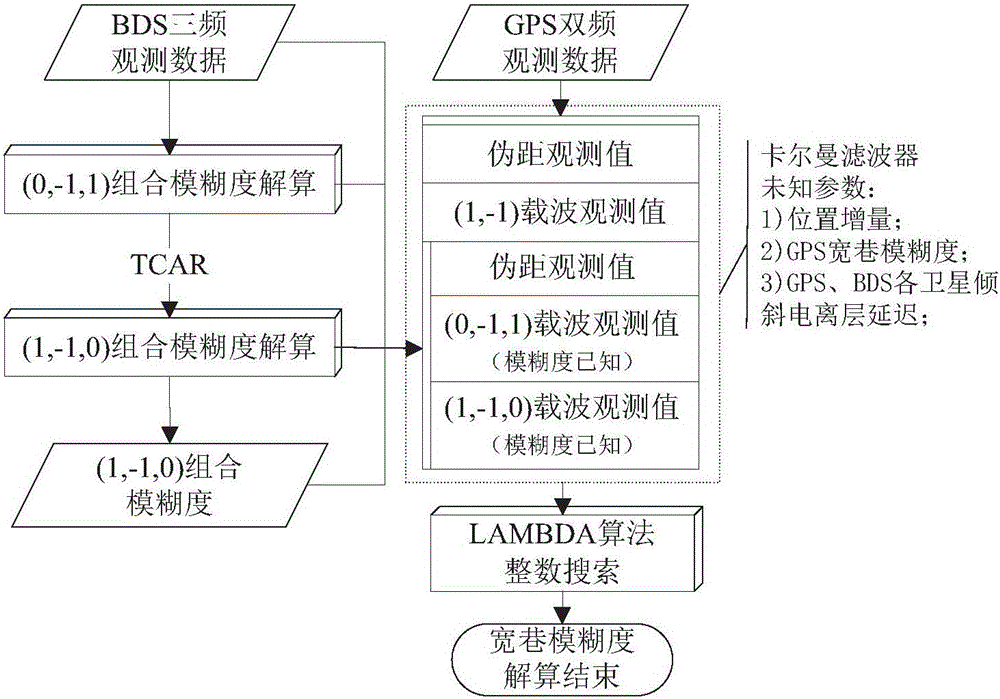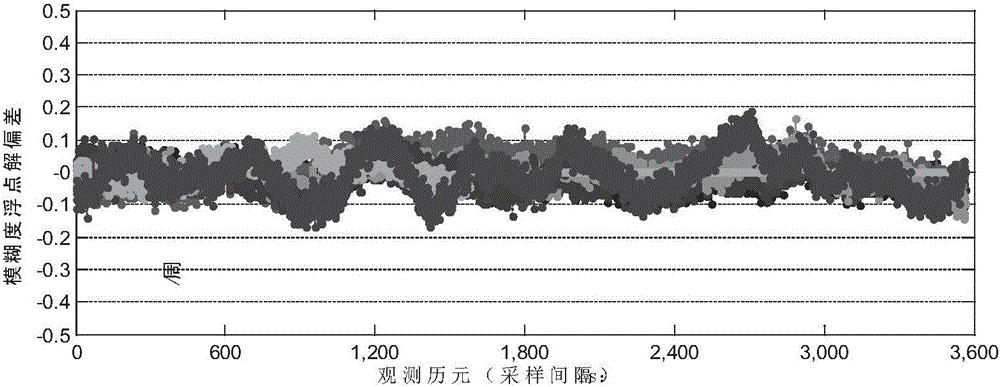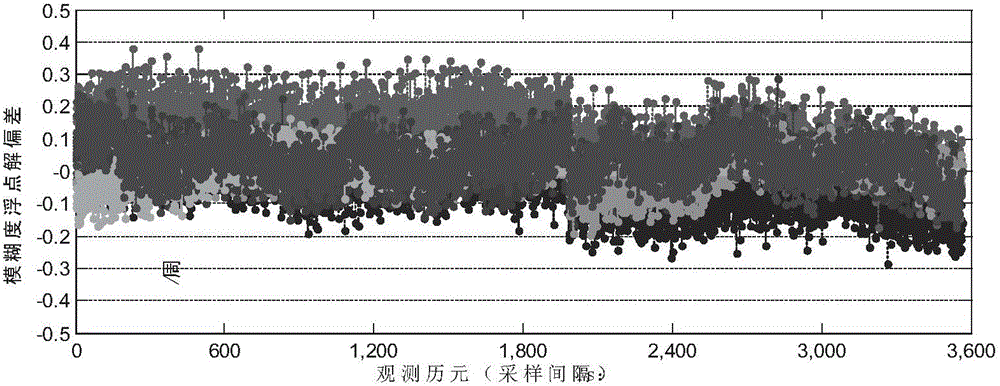Wide lane ambiguity resolution method through BDS and GPS observation information fusion
A wide-lane ambiguity and ambiguity technology, which is applied in the field of global navigation satellite system satellite positioning, can solve the problems of difficult three-frequency observation information fusion, high success rate, and insufficient use of redundant information.
- Summary
- Abstract
- Description
- Claims
- Application Information
AI Technical Summary
Problems solved by technology
Method used
Image
Examples
Embodiment
[0045] Example: A set of 74km-long baseline data in the Henan CORS network is selected for experimental verification, and the data is collected at 4:00-5:00 UTC on March 7, 2014.
[0046] figure 2 with image 3 The single-epoch solution deviations of the combined ambiguities of each satellite (0, -1, 1) and (1, -1, 0) of the three-frequency BDS are respectively given, and the reference value is obtained by smoothing the data of the entire solution interval. Got. It can be seen that the deviation of the combined ambiguity of (0, -1, 1) in the single epoch solution is basically within ±0.1 weeks, and the ambiguity of the whole week can be reliably fixed by rounding the single epoch; image 3 It can be seen that the deviation of the combined ambiguity of (1, -1, 0) is larger than that of (0, -1, 1). This is because the TCAR model is still affected by the residual ionospheric error, and the ambiguity noise is compared to (0, -1, 1) has also become larger, but its solution deviation ...
PUM
 Login to View More
Login to View More Abstract
Description
Claims
Application Information
 Login to View More
Login to View More - R&D
- Intellectual Property
- Life Sciences
- Materials
- Tech Scout
- Unparalleled Data Quality
- Higher Quality Content
- 60% Fewer Hallucinations
Browse by: Latest US Patents, China's latest patents, Technical Efficacy Thesaurus, Application Domain, Technology Topic, Popular Technical Reports.
© 2025 PatSnap. All rights reserved.Legal|Privacy policy|Modern Slavery Act Transparency Statement|Sitemap|About US| Contact US: help@patsnap.com



